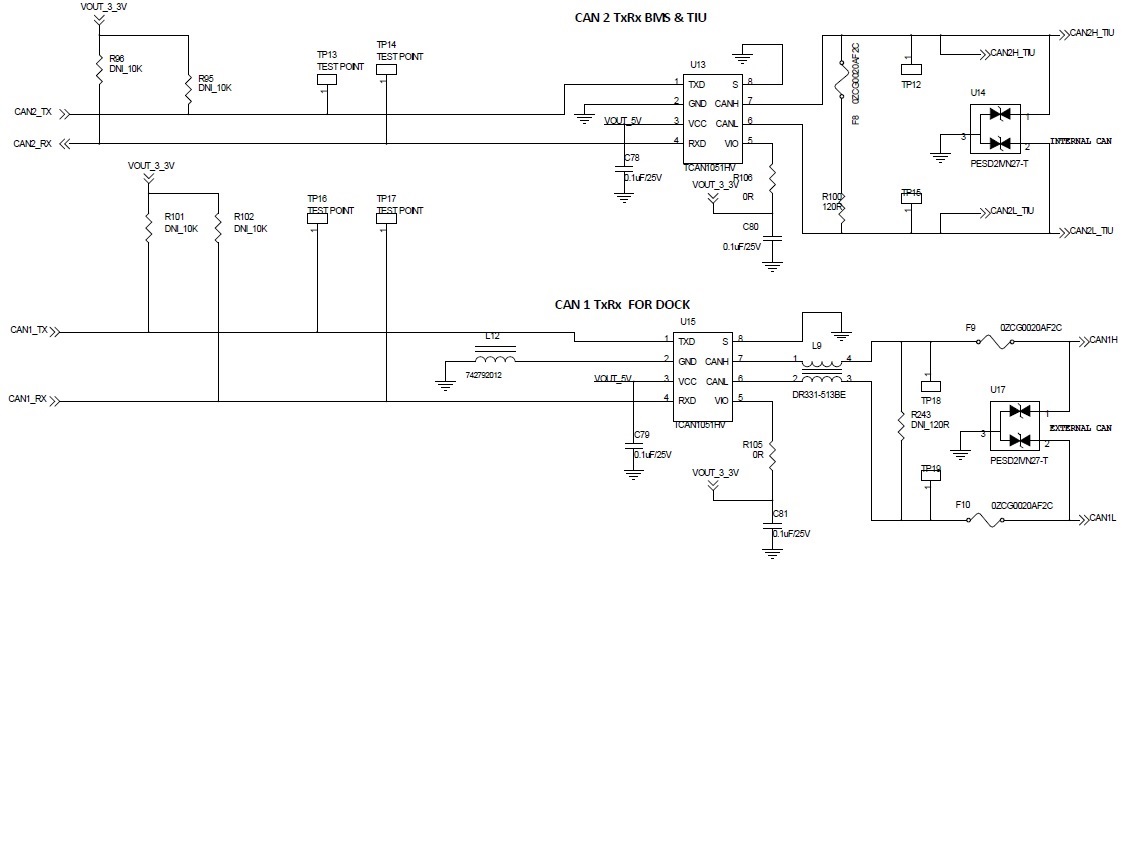Other Parts Discussed in Thread: TCAN1051, TCAN1051HV, STRIKE, LM5060, LM5008, LM5116
1. Do you have a comparison data for transmission performance or EMC of TCAN1051 with and without common mode choke?
2. For TCAN1051HV : External ESD Diodes(CDSOT23-T24CAN) are not required as those can only break at 30-40V whereas IC can withstand 60-70V ; Right ??



